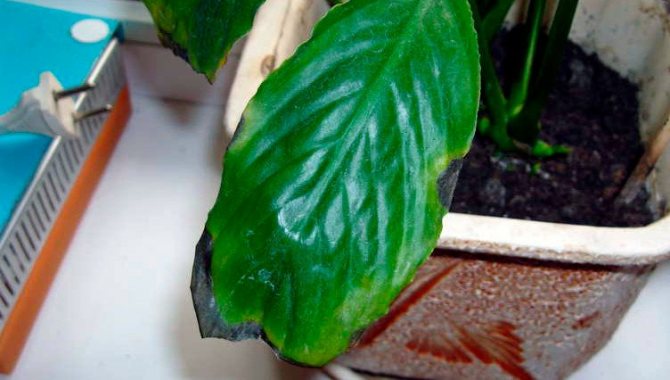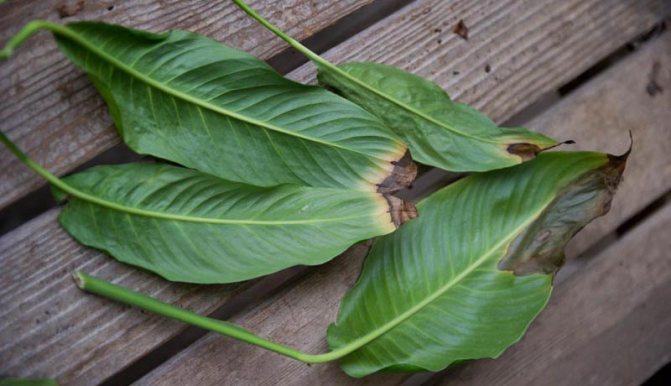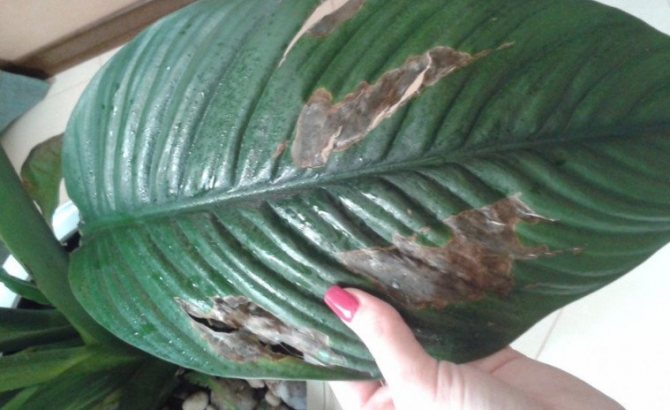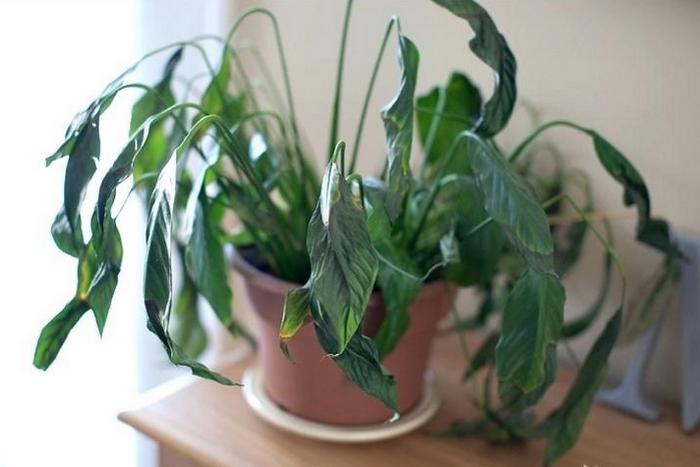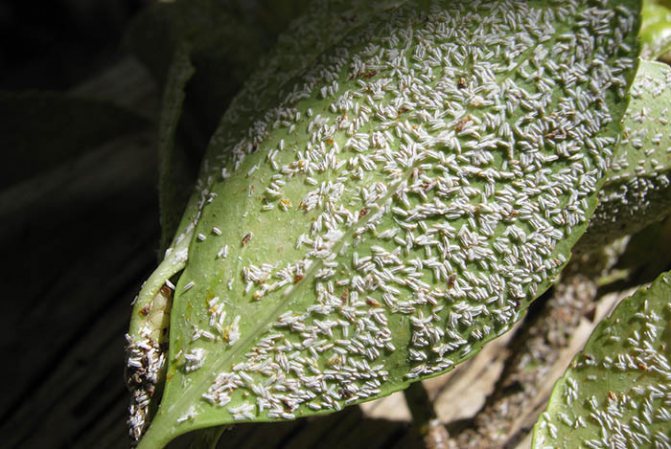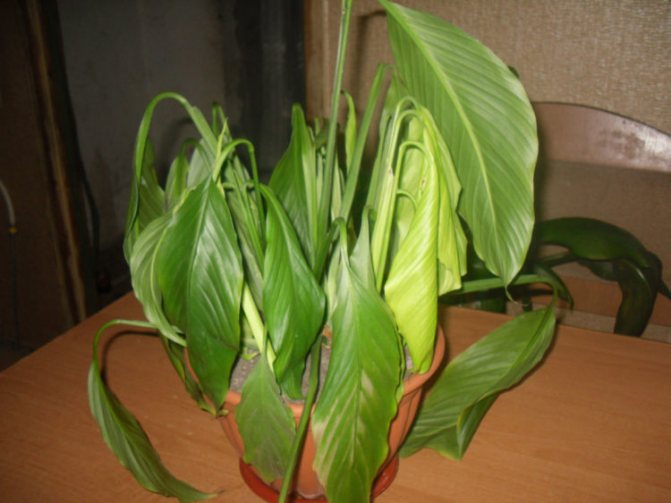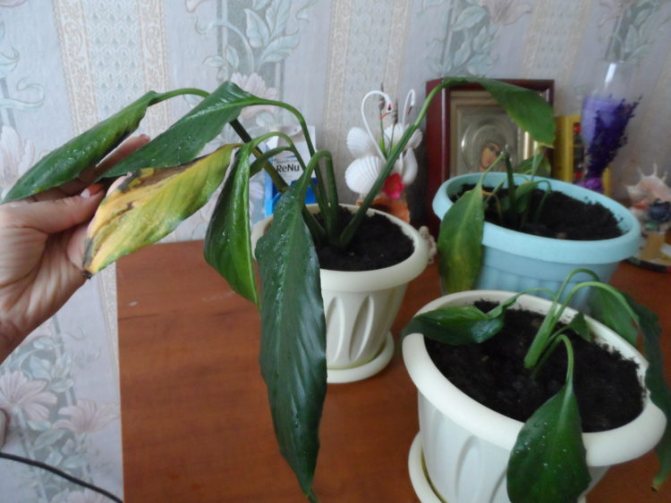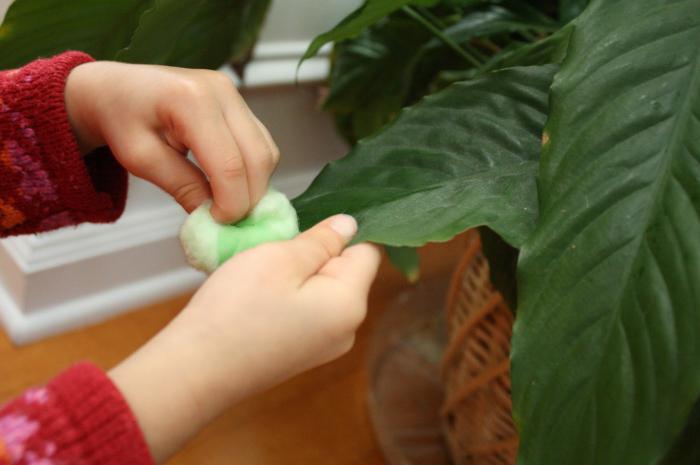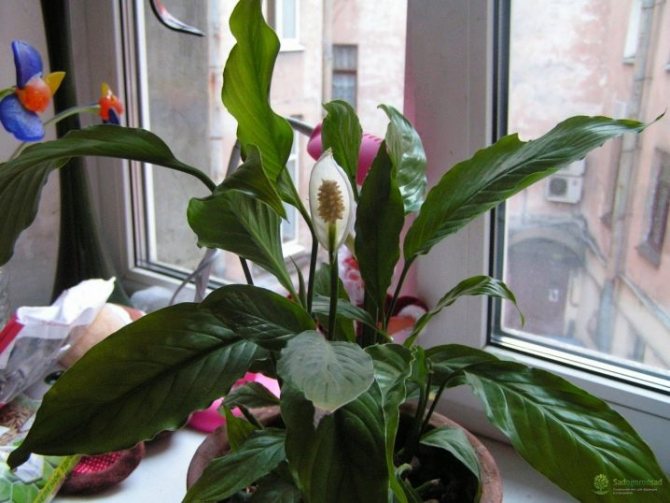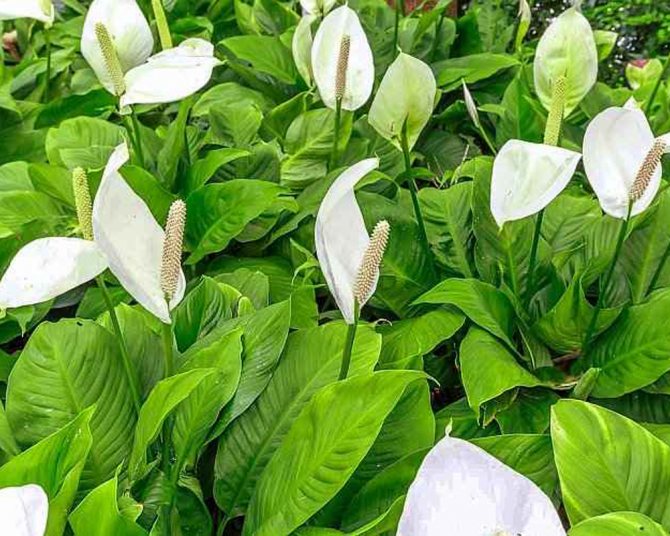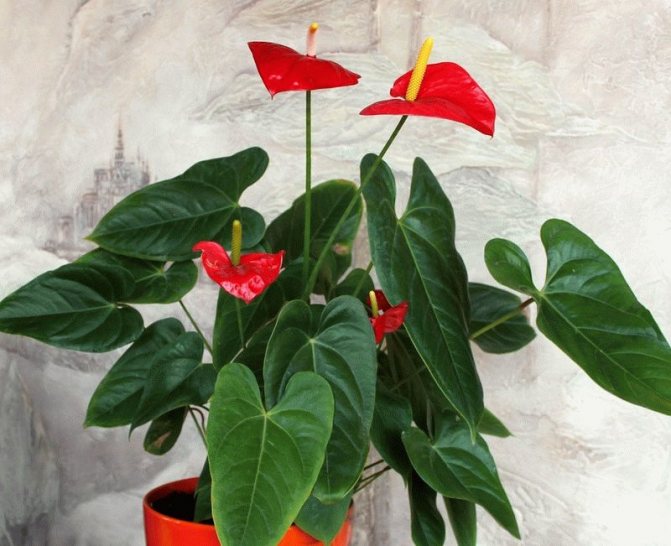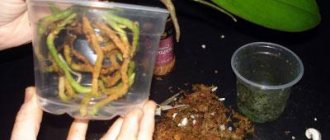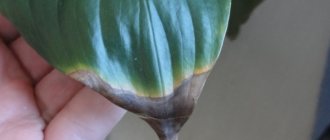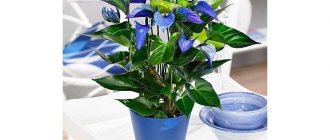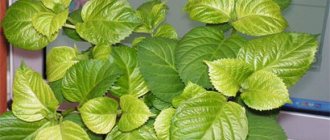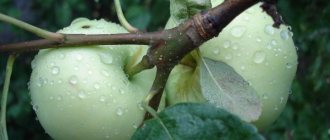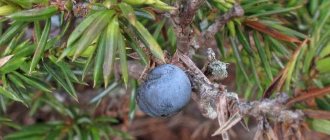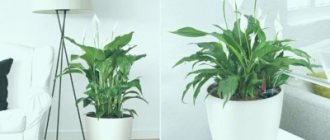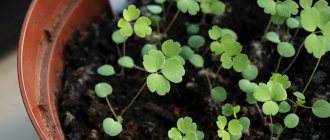Brown spots on the leaves of spathiphyllum appear with improper care of the plant or during the development of any fungal disease in it. Such lesions lead to a deterioration in the appearance, disrupt the cycle of growth and development of the flower, slow down its opening, and sometimes signal the possible death of this representative of the South American flora. If dark spots appear, ask an experienced gardener what to do.

Diseases of the plant Female happiness
If the care is wrong, the flower will get sick.... What is disease in relation to it? How to determine that he is sick and that urgent measures need to be taken?
Definition
The disease in spathiphyllum is a process that occurs under the influence of unfavorable conditions of detention or due to damage by pests. The more serious it is, the more functions are impaired (flow of water, nutrients, photosynthesis, synthesis of growth and plastic substances, respiration, etc.). The more neglected it is, the faster the flower will die.
Provoking factors
- The harmful effects of neighboring plants and parasites.
- The influence of animals and humans.
- Poor conditions of detention.
External manifestations
With an illness in spathiphyllum, leaves wither, turn yellow or turn black at the edges... The reason is not always the wrong care. Sometimes yellowing of the leaves causes a lack of iron, and the cessation of growth is observed due to nitrogen deficiency. Sometimes the plant turns yellow not only the leaves, but also the flowers. Read more about this here.
Symptoms
The main complaint is blackening of the leaf, which affects only the tip or extends to the entire surface. And also this disease manifests itself in the following:
- yellowing of the leaves;
- the presence of spots around the edges;
- dry tips;
- lack of flowers;
- slowdown in growth.
Anxiety symptoms can develop both immediately and with prolonged residence in the house. A few weeks after buying a new plant, it must be transplanted. This is due to the fact that the store uses peat enriched with vitamins instead of a nutrient substrate. By replanting a flower, you can remove rotten roots, get rid of random parasites, and create the necessary soil.
If your flower begins to ache after a long stay in your home, then it is necessary to establish why the blackening of the leaf began.


What ailments most often affect this flower?
- Lack of growth due to excess light or waterlogged soil.
- Lack of flowering due to transplanting into a pot of a larger than necessary size. Spathiphyllum grows roots instead of discarding flower stalks. If they did not transplant it, but there are no buds, put the pot with it on the balcony for 15 days, where t = + 12⁰С.
- Brown spots on the leaves - a sign of overflow or pest damage. Black tips are a sign of a lack or abundance of moisture. Blackening of the entire leaf plate is a sign of a lack of nitrogen, potassium and phosphorus.
- Dry tips in a young plant, it is a sign of adaptation to new conditions of keeping. If the formed spathiphyllum suffers, change the watering, making it more frequent.
Further care
After eliminating all the causes of stains on the leaves of spathiphyllum, it is important:
- maintain optimal temperature and humidity;
- spray the leaves on time;
- feed with mineral fertilizers for aroid plants that do not contain lime (for example, Biomaster, Flower) in a ratio of 1 g per 1 liter of water once a week.
Important! Spathiphyllum should not be fed with organic fertilizers - it will grow a lot of green mass and will not bloom.
Photo
In the photo below you can familiarize yourself with what spathiphyllum diseases look like, and then we will tell you how to deal with them.
What it is?
Blackening of leaves is the process of the appearance of black or brown spots on the leaf plate, which subsequently cause the surface to deform and dry out. First, yellow spots appear, which then darken and turn black. The leaf may darken evenly or in a chaotic manner, but at the end it turns black completely and falls off if not taken care of.
In the photo you can see what the blackened leaf blades of the plant look like.
Step by step instructions on how to cure
The course of treatment of spathiphyllum depends on which part of the flower Women's happiness is sick and how it is affected.
Lack of growth
Florists face this problem after planting a flower. There are two reasons for the lack of growth:
- Large diameter pot.
- After transplantation, the spathiphyllum is placed in the shade or under the hot rays of the sun.
If the lack of growth is caused by an improperly selected container, wait until the spathiphyllum builds up a sufficient root mass. After that, it will overgrow with new green foliage.
Attention! To avoid growth problems, spathiphyllum is transplanted into a low pot slightly larger than the previous one.
When choosing a place for a pot after transplanting, preference is given to one where it will be light, but without direct exposure to the rays of the sun.
You can additionally read about the reasons for the lack of growth of spathiphyllum and the treatment of the disease in this article.
Darkening
In conditions of insufficient lighting, the leaves of the spathiphyllum darken... To return the former brightness to the foliage, the pot is transferred to another, lighter place.
Blackening


In women's happiness, leaves can turn black and dry. In some growers, the tips dry up, others notice a dark strip along the edge of the leaf, and in others the leaves have completely turned black and the border between the diseased and healthy parts is clearly visible. How to proceed depending on the circumstances?
- If a small black edge appears on the plate, the indoor air is too dry. This problem is encountered in winter when central heating is turned on. The florist's task is to increase the humidity of the air by means of a humidifier, spraying or moving the flower pot into a pallet with wet expanded clay.
- When most of the leaf turns black, watering is stopped, since the earth does not dry out. Spathiphyllum loves moisture, but within reasonable limits, otherwise the roots will rot.
Reference! If the soil in the pot is 1/3 dry, spathiphyllum is watered. - The tips of the leaves freeze if the pot is on a cold windowsill.
- Spots on the leaf blade are burns from improper fertilization. In this case, you cannot do without a transplant.
You can read more about blackening of spathiphyllum here.
Further, a visual video about the blackening of the leaves of the spathiphyllum:
Yellowing of leaves
- Mass yellowing of leaves is caused by direct sunlight. Yellow spots are a sign of sunburn.
- The discoloration of the green mass occurs due to the fact that the pot is on a window facing southwest or south. It loses its bright green color, as if fading.
- When the leaves turn yellow, but with the preservation of the bright green color of the veins, you cannot do without the introduction of top dressing - iron chelate. Otherwise, the formation of chlorophyll will be disrupted and chlorosis will develop.
Spathiphyllum with yellow leaves is treatable... It grows well on any window, but if it faces east or north, then shading is not needed.
Drying leaves
This problem is caused by insufficient moisture in the air masses. If you humidify the air with a humidifier or make it a rule to spray it a little every day, everything will return to normal. When the lower leaves dry, they are not upset: female happiness is aging.
Read more about why the leaves of spathiphyllum and other parts of it dry up, what to do about it, read here, and here we talked about what other diseases of the leaves of spathiphyllum are.
Rot
Many growers miss the first symptoms of this disease. Rot appears at the basewhile they examine the leaves. In time, when the rot hits them, they will notice it. Usually it affects not the outer, but the reverse side of the leaf plate, and after that the roots. Rot is an incurable disease. Its appearance is prevented: the diseased parts are removed during transplantation without regret.
Important! When transplanting, the entire instrument is well disinfected.
Withering
In spathiphyllum, leaves wither from excess or lack of moisture.
- With an excess of moisture, soak the ground with paper napkins or transplant it into a pot with another new soil.
- If there is a lack, the irrigation scheme is changed. The first time it is watered with a small amount of water, the second - a little more. The volume of water is gradually increased.
Read more about the reasons for the wilting of spathiphyllum flowers here, and here we talked about why the leaves of a flower wither.
Spotting
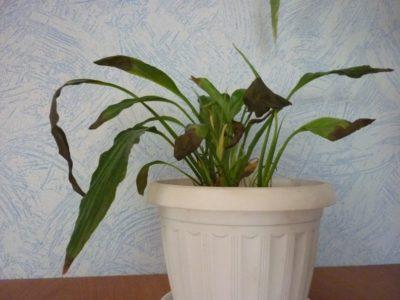

Harmful Phytophthora fungus causes root rot and leaf blight... Spores of this pathogen are in the ground. If you maintain high humidity in the pot, they will "capture" the sub- and above-ground parts of the plant. The first and main symptom of the disease is darkening and wetting of the root collar. Then chlorosis develops, leaves wither, necrosis begins. The roots soften and women's happiness dies.
A harmful fungus enters the soil through splashing water during irrigation or through tools improperly processed before transplanting. Whether it grows or not depends on the actions of the grower. If he does not allow overflows, and makes sure that the top layer of the soil dries out, the spathiphyllum will not get sick. When contaminated, pesticides and insecticides are useless.
You can read more about brown spots on the leaves of spathiphyllum here.
Greening flowers
This process is natural. There is nothing to be done. When a snow-white flower fades, it turns green.
Causes of the appearance of dark spot
Sometimes dark spots appear on the spathiphyllum. The causes of diseases of the leaves of spathiphyllum can be different:


dry air in the apartment;- over-watering or too little watering;
- heterogeneity of the soil;
- hypothermia of the roots;
- sunburn;
- too abundant fertilization;
- lack of trace elements, in particular iron;
- damage by bacteria or fungi.
How to perform resuscitation?
- Spathiphyllum is taken out of the pot, the roots are examined and all rotten are cut off.
- Healthy roots are washed with a weak solution of potassium permanganate. After that, they are treated with crushed activated carbon tablets and wrapped in newspaper for 24 hours.
- While the roots dry out, prepare a pot with new soil. In a flower shop, they buy a universal soil for flowering plants. It is poured into the pot after the drainage holes are made and the drainage layer is laid.
- The flower is carefully transplanted into new soil, treated with Epin.
- After transplanting, do not water it, since the soil in the pot should be slightly damp. Cover the top with spathiphyllum with plastic wrap or a plastic bottle, creating the effect of a greenhouse.
- After transplanting, watering is not frequent, but Kornevin is added to the water for 1-1.5 months to stimulate the formation of roots.
What to do?
The advice of professionals will help save spathiphyllum from drying out and death. First, identify the problem, then you can easily find ways to solve it.
- If your flower grows dark and dry at the ends, most likely it is not properly cared for. Check if your pet is getting enough moisture, not too rarely you water it. Excess water is also possible. If the leaves of the spathiphyllum turn black everywhere, then a transplant is necessary.
- Another reason for leaf darkening is improperly selected soil or drafts. Transplant the plant properly into suitable soil. Remove the flower from the window to protect it from cold air currents. Since "female happiness" is shade-loving, it grows beautifully in the back of the room, sitting on a special stand.
- A serious problem arises when the leaves turn black from the middle. "Women's happiness" loves warmth, moisture and sufficient watering, and these are ideal conditions for the growth of the fungus. It causes rotting of the roots, drying of the leaf, the flower stops blooming. If you suspect a fungal infection, immediately tear off the diseased leaves, then spray the entire plant with a fungicide.


It is possible to use folk methods to combat the fungus. To do this, you need to make an infusion of citrus peels according to the following recipe:
- take 150 g of orange or lemon peels, fill with water;
- let it brew for 2 hours, then strain;
- spray the plant with the resulting infusion 2-3 times a day for a week.


Prevention measures
- Poor-quality seedlings should not be transplanted.
- Do not use contaminated soil when replanting.
- It is impossible not to disinfect the instrument and the pot before transplanting.


Do not use a coarse nozzle for spraying.- You can not leave rotten roots during transplantation and you can not transplant female happiness without treating the cut sites with cinnamon powder.
- It is necessary to make it a rule to do top dressing with Fitoverm.
- It is necessary to inspect the plant regularly.
Why do the leaves of spathiphyllum turn black
However, you should pay special attention to the indoor flower in the following cases:
- a fairly common pest of Spathiphyllum is a mealybug, for the destruction of which it is necessary to wipe the leaves with a weak alcohol solution, and then spray with an infusion based on citrus peels or "Aktellik";
- defeat by a sooty fungus is accompanied by blackening of the leaves of the spathiphyllum, and treatment of the affected surfaces with a standard soap solution is used for treatment;
- significant harm to the flower can be caused by the shield moth, which provokes the appearance of dark spots on the indoor plant, and to combat which a soap-tobacco solution or treatment of the aerial part with nicotine sulfate is used, at the rate of 1 g of the drug per 1 liter of warm water.
The best way to prevent pests or diseases from affecting Spathiphyllum is still to systematically wipe down the foliage with a damp sponge.
How to care for spathiphyllum (now we know)
When growing spathiphyllum, one should take into account the fact that foliage grows better in a houseplant in too large pots, and in order to obtain abundant and prolonged flowering, it is imperative to observe the proportion between the size of the root system and the diameter of the planting container.
Malnutrition
Blackening of the tips of the leaf blades may indicate a lack of vital elements in the soil. Providing the plant with the necessary amount and quality of nutrients, you can eliminate the problem.
Most often this occurs due to an insufficient amount of nitrogenous or phosphorus fertilizers in the ground. In this case, fertilizers containing phosphorus, potassium, nitrogen are applied. This can be a ready-made houseplant mixture.
The dosage should be observed as indicated on the package. During the growing season, the flower is fed every two weeks.During the dormant period, in winter, the flower does not require feeding.
Watering and humidity
Spathiphyllum flowers naturally exist in humid climates and grow along the banks of water bodies. Accordingly, they need a fairly high humidity. Water them abundantly, while avoiding stagnant water. Keeping a balance out of habit is difficult. At first, drooping leaves can serve as a signal that the time has come to water the flowers. However, it is not worthwhile to constantly bring to this. Although when watering, the leaves rise literally before our eyes, within a quarter of an hour, this situation is stressful for the plant. A couple of times will be enough to calculate the required time interval, and then stick to it in the future.
Watering alone is not all that spathiphyllum indoor flowers need. Care should include spraying over the foliage. In hot weather, it should be done at least once a day. It is better to choose the evening time for this, so that the plant will recover overnight and prepare for the next day. Spraying is also permissible in the early morning, but only if the sun's rays do not fall on the spathiphyllum for the next few hours - drops of water can act as a lens and leave burns on the leaves.
If the air in the room is too dry, the spathiphyllum tray is lined with moist moss, and its dampness is constantly maintained. You can also buy a humidifier - most flowers hardly survive dryness, so the device will be useful for your entire garden.
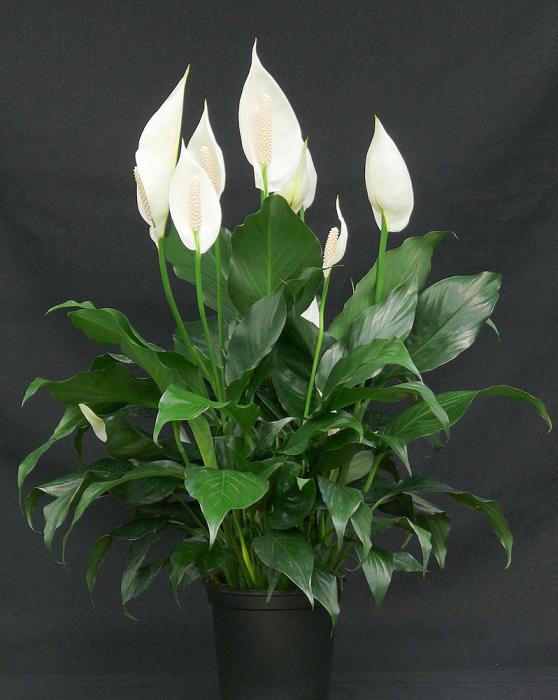

Leaf problems
If they dry out and turn black, then you made mistakes when watering. Moreover, this can be both its insufficiency and redundancy. Here you need to analyze and observe the pet. If you are sure that everything is in order with the water, try feeding your spathiphyllum: drying and blackening of the foliage can be caused by a lack of nitrogen and phosphorus.
The yellowing of the leaves is associated with dry air. You can try to "bathe" the flowers in lukewarm water or to sprinkle them more often. Alternatively, place a bowl of water next to the pots.
What soil does spathiphyllum like?
There is only one requirement for the land in which the plant is planted: it must be slightly acidic. If you prefer to buy a ready-made soil mixture, take a universal one. If you want to create the most comfortable conditions for your pets, prepare the soil according to one of the recipes below.
- Peat soil is taken in triple volume, leaf soil - in double volume, humus, sand and bone meal - one at a time.
- Leafy, humus, peat soil and sand are taken in equal amounts, and sod land - in double. Brick chips and charcoal are also added here.
The consistency of the soil should be loose or medium. Dense soils are not suitable for spathiphyllum.
Maintaining appearance
In order for a flower to amuse the eye with lush greenery and flowers, it must be looked after. In the spring, you can see the first signs of flowering - first a small ear on a long stem appears, which then turns into a beautiful white flower.
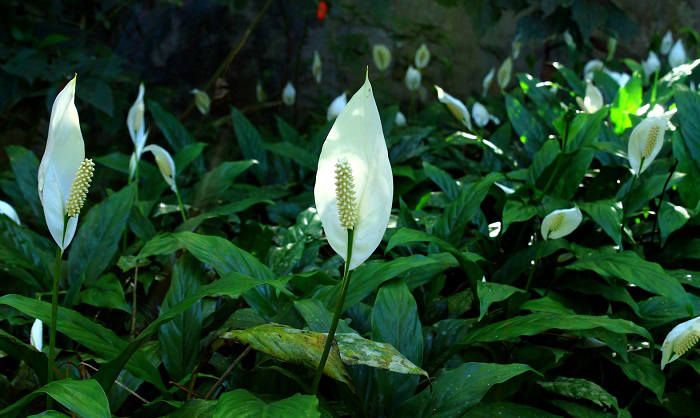

In order for the plant to delight all the spring and summer months with its flowers, it is necessary to cut off the fading, with brown "senile" specks of inflorescences-arrows, in order to make room for the development of new, young ones. Make a cut lower, with a sharp razor or knife. This must be done on time.
As soon as the cover of the flower starts to turn green. Otherwise, they will draw out all the juices and forces from the plant, and there may not be enough for new flowers, less of them will be formed. Cutting stimulates further flowering.
We transplant and propagate
Satifillum flowers need to be transplanted regularly. Usually this procedure is carried out in the spring. However, if your flower is not yet ready for this, it is better to postpone it. Its roots should completely braid with an earthen ball in the old pot.If you were in a hurry with the transplant, the spathiphyllum will hardly take root in the new container and will refuse to bloom. The pot should be one and a half centimeters larger than the previous one in diameter. If a much larger one is provided, the plant will start to mope. A drainage layer is required, and at least a finger thick.
Spathiphyllum flowers are planted usually by dividing the bush. A sign of its readiness for division is the branching of the shortened stem and the unfolding of new leaves at several points at once. Reproduction is usually combined with a spring transplant. The bush is divided into 2-3 pieces. Each of them must have a growth point and roots. If there are few roots, this is not a reason to abandon the separation: they will appear very soon. Pots for young plants should be no more than nine centimeters.
Light in the life of spathiphyllum
As already mentioned, the plant does not need abundant and bright light. On the contrary, too "hot" lighting can harm him - from direct midday rays on the leaves often burns. The most suitable for spathiphyllum are northern windows. If there are no such in the apartment, it should be placed on racks or tables at some distance from the windows. However, it is not worth getting too carried away with pushing away. Like any other plant, spathiphyllum flowers will not survive without light at all. If their foliage has faded, it has become lighter, it has begun to grow shallow and too stretched, it means that the lighting is clearly not enough. For the summer, flower pots can be taken out on the veranda or balcony, but only if there is no direct sun there. Otherwise, you need to take care of shading.
Indoor flowers: names. Spathiphyllum - varieties and varieties
About 45 species - this is what a variety the plant can boast of. Not all of them have the same popularity and distribution, but there are plenty to choose from.
- Wallis spathiphyllum is the most common. It grows up to 40 centimeters, dense green leaves are collected by a rosette. When flowering, it forms a white ear, framed by a much longer veil, white at the base, and pale green at the end. The variety is loved for its particular unpretentiousness and tendency to live in the shade, which very few indoor plants show.
- Spathiphyllum, abundantly flowering, is higher: it grows up to 60 cm. The leaves are much longer than that of the previous variety, up to 20 cm, and somewhat wider - 9-12. The ear is elongated and reaches a quarter of a meter with a half-length cover.
- Even more spathiphyllum is spoon-shaped, which can grow up to a meter. Its leaves are rather oval than lanceolate, up to 40 centimeters long and up to 20 centimeters wide, with wavy edges.
- Cannoli spathiphyllum is very interesting. Unlike other varieties, it has leaves similar to canna foliage, and their color is not dark, but bright green. In addition, it blooms with fragrant yellowish cobs with a green tint.
We can also mention the hybrid spathiphyllum flowers of the Mauna Loa variety with very long foliage (70 centimeters), blooming with proper care all year round; "Mini", which fully corresponds to its name - a dozen centimeters in height; "Sensation", which is just a giant and reaches one and a half meters. All these are very beautiful spathiphyllum flowers. Home care for them is approximately the same, despite the difference in size and color.

